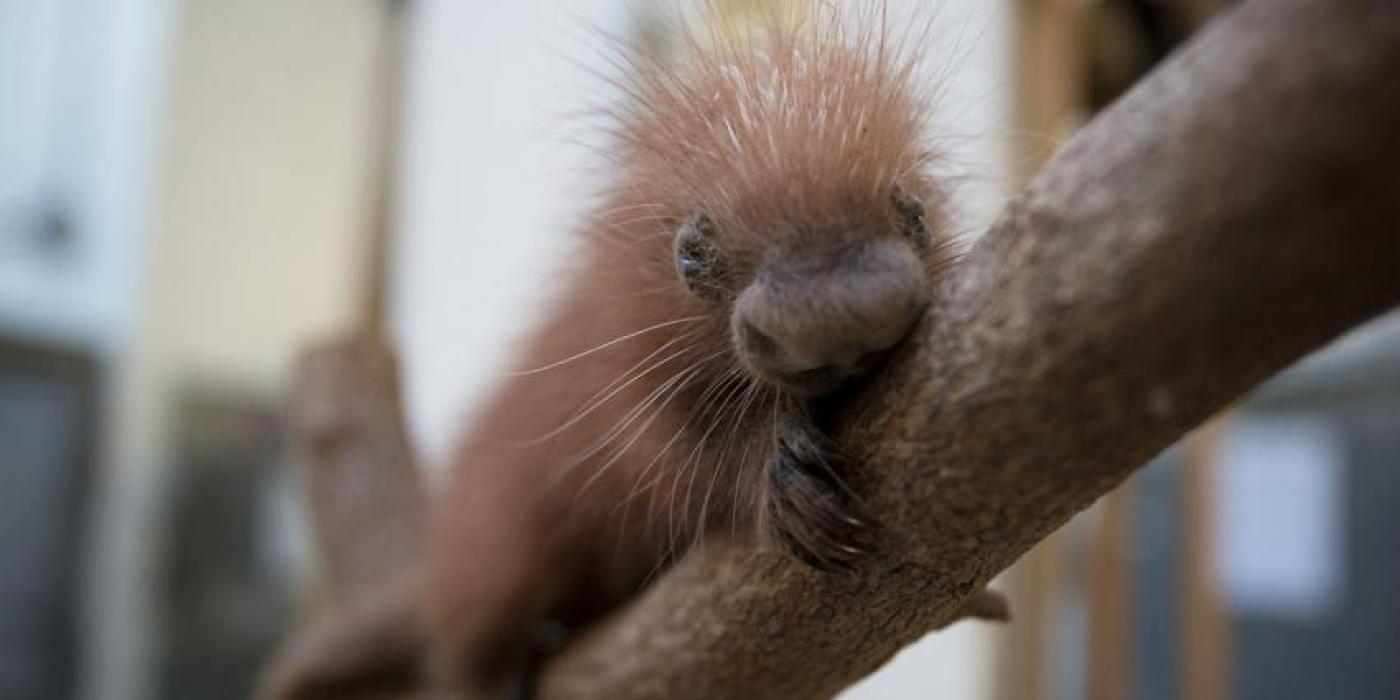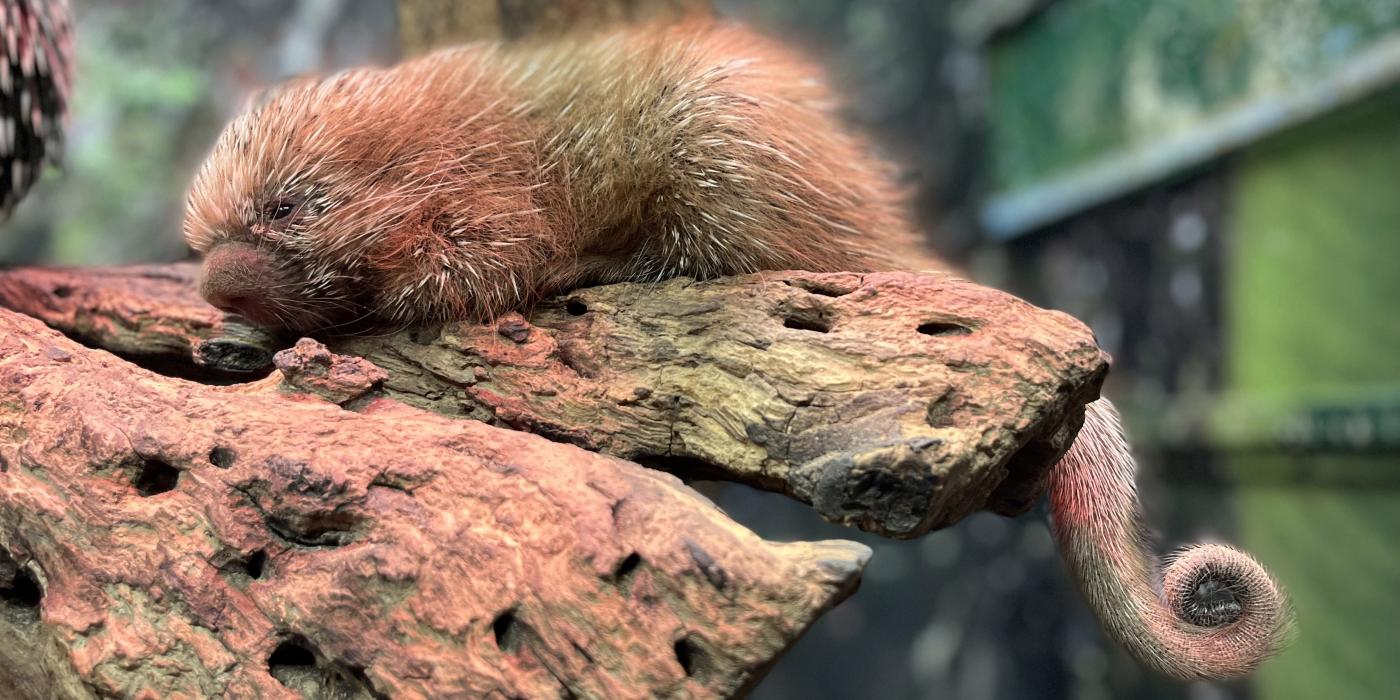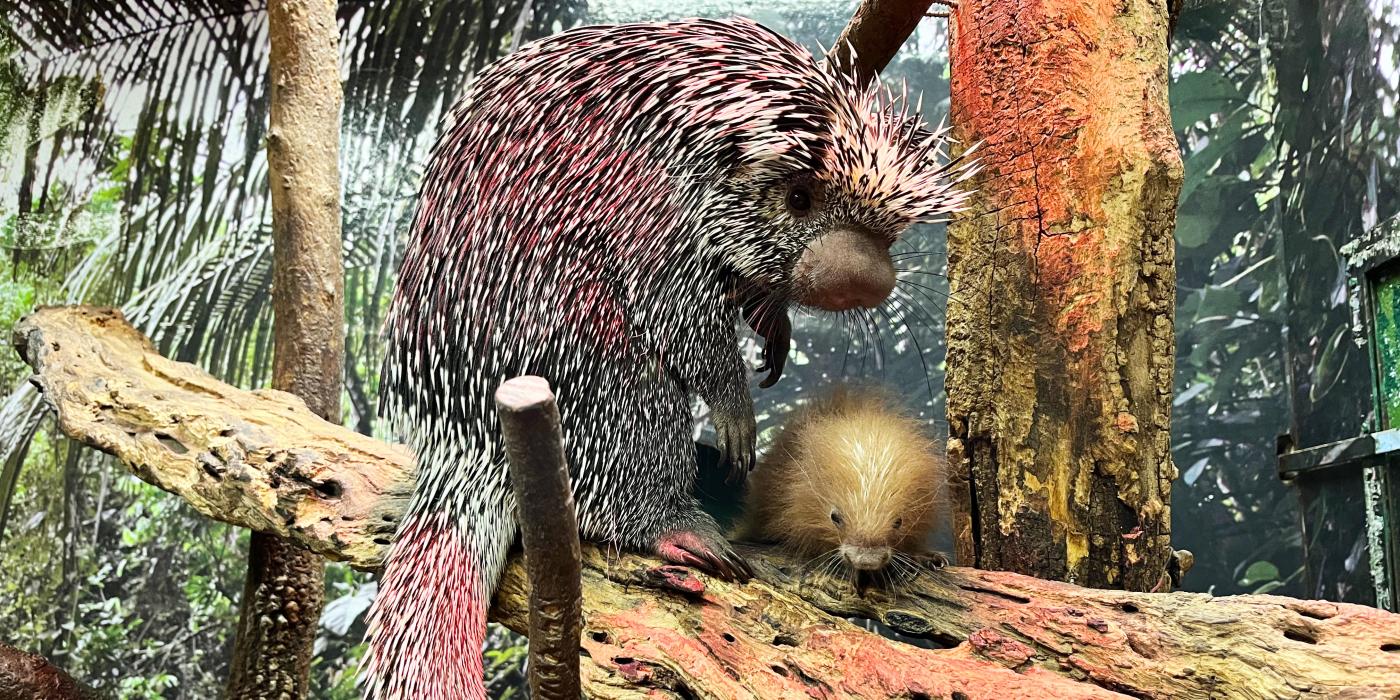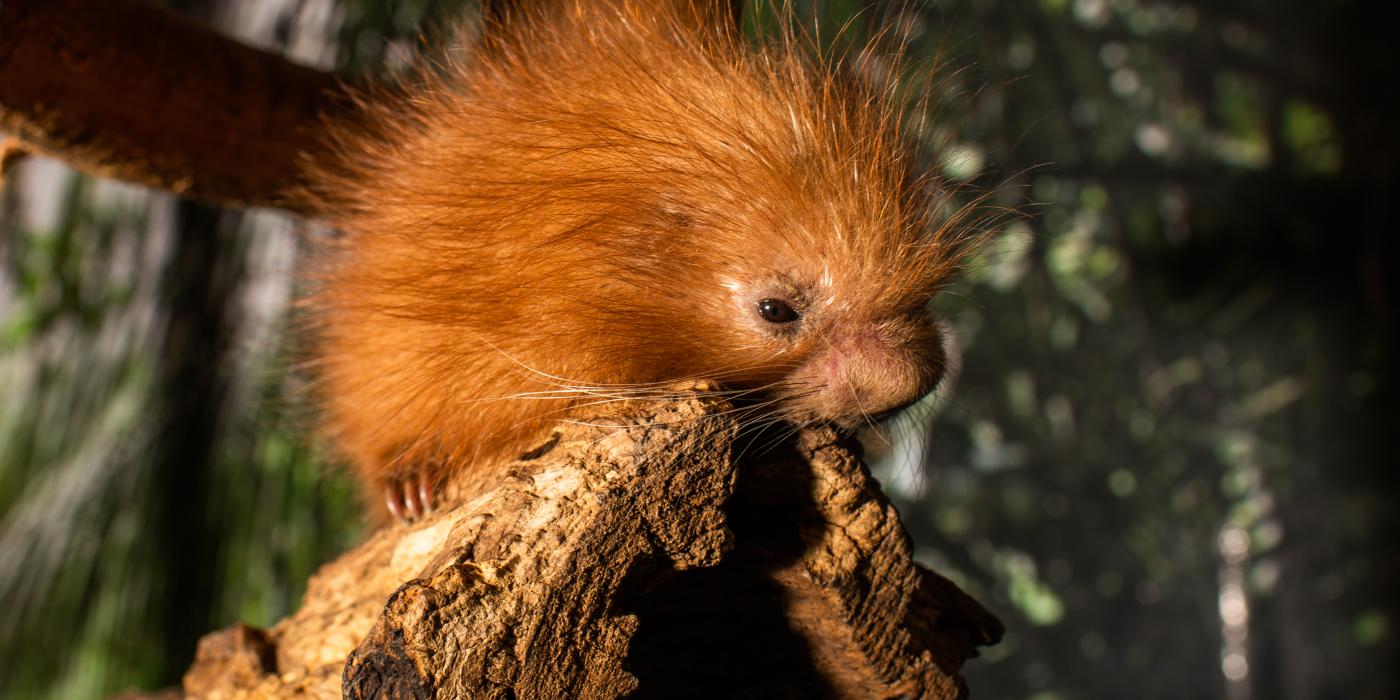Curious About Quills
We’re celebrating the newest member of the Small Mammal House, a baby prehensile tailed porcupine, by taking a closer look at one of the species' defining characteristics—quills! At birth, a porcupette’s quills are soft, but they become stiff and sharp within minutes. There is not much difference between the quills of an infant and those of its parents apart from length. In fact, some of the porcupette’s quills are nearly identical to the very small quills that surround an adult’s ears and nose.
It may appear that the prehensile-tailed porcupine has quills all over its body, but there are two spots that lack quills. A close inspection of their underbelly reveals that they have hair that is similar in appearance to their quills, but is soft to the touch. This species also lacks quills on the underside of its tail, which it uses like a fifth appendage to grasp branches as it moves through the trees.
If a prehensile-tailed porcupine feels threatened, it will go "piloerect" and its quills will stand on end. This makes the porcupine look twice as big and ferocious to potential predators. If the predator doesn’t stand down, the porcupine will try to poke the predator with its quills. Small, sharp barbs on the end of each quill will stick into the predator and release from the porcupine. Both adults and porcupettes shed quills naturally, but they always grow back—just as other mammals’ hair does.
Quills also contain the clues to a porcupine’s gender. It is tricky to tell a male porcupette from a female at a young age because they show no sexual dimorphism until they are older. To determine whether a porcupette is male or female, animal keepers and Zoo scientists at the Center for Conservation Genomics turn to the mighty quill to relay the secrets of an animal’s DNA. After gently exfoliating the porcupette and gathering a few quills, keepers send the samples up to the lab, where scientists look for the gene linked with sex determination. It’s a fast and safe method of determining a porcupine’s gender. This week, the Zoo's geneticists determined that the porcupette born overnight Feb. 22 is a boy! He is on exhibit with 7-year-old dad, Clark and 10-year-old mom, Bess.
Related Species:



